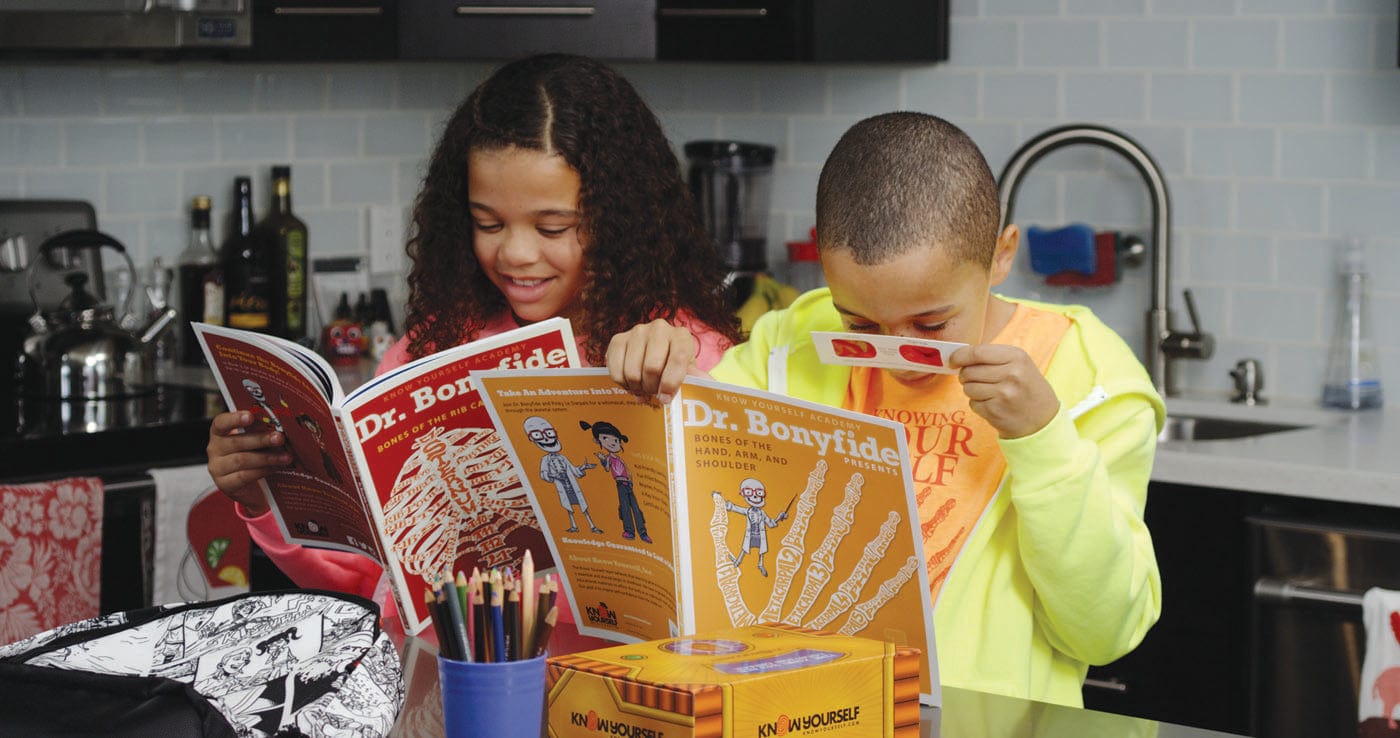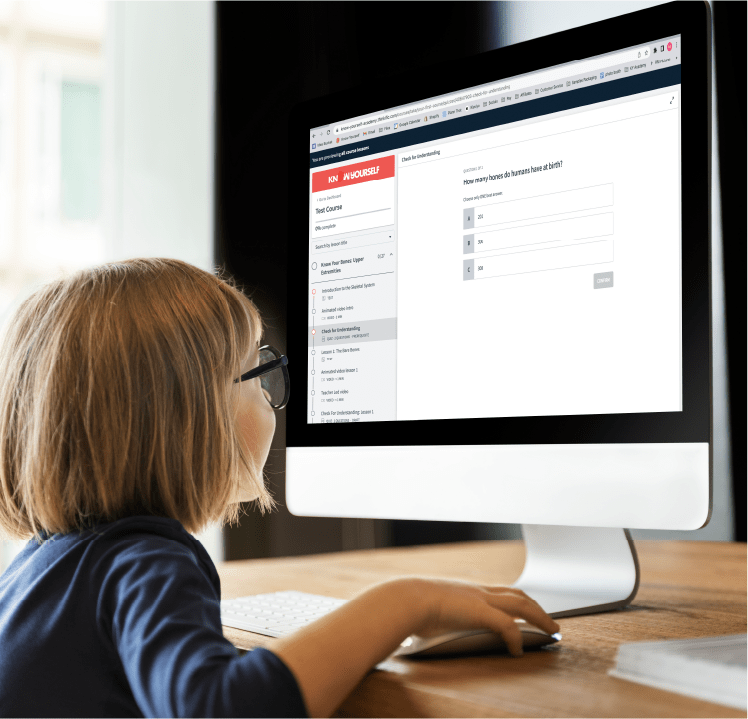
You’re sweating, flushed, nauseous, and fumbling for words...is the flu coming on? No, it’s just time to talk about the “P” word: puberty.
Are you worrying about how to bring up the topic with your pre-teen? It can be an awkward subject for both parents and kids, but understanding the science of what’s happening can help to put everyone at ease.
The Only Thing I Want to Change is The Subject
Change is hard—and few things cause more unease than changes to the bodies we live in every day. Us adults may have a hard time remembering (and some of us have tried hard to forget) what it’s like for your body to suddenly change. Childhood is going along just fine, you’re used to waking up to the same body day after day, and then...you spot a hair in a weird place. Things are growing that never have before. You have no idea if anyone else is experiencing the same thing, and you’re too mortified to ask!
According to The Cleveland Clinic’s Veronica Isaac, the age at which these changes begin varies -- between ages 8 and 13 for girls and 9 ½ and 14 ½ for boys— but they almost always happen in the same order.
The first thing kids might notice is fine pubic hair beginning to appear, which will continue to get coarser and darker over the next few years. Kids will also begin to grow faster, at a rate of about 2-2.75 inches per year in early puberty, and sometimes at an even greater rate in later adolescence. Boys will start to experience genital growth and girls will notice their breasts budding, then growing, over several years. Up to 50% of boys may also experience breast development, but this usually goes away by the end of puberty.
In the pre-teen years, underarm hair and acne begin to appear for both boys and girls. They—and everyone else—may notice that they sweat more or that their sweat now has an odor. Girls’ hips may start widening or their bodies might seem curvier in general. Girls will typically start menstruating, or get their first “period,” a few years after other signs of puberty start (usually between the ages of 10 and 14; the average age is 12 years old). This is when the uterine lining sheds for the first time and causes bleeding. Boys’ voices begin to deepen and their muscle mass increases. In the last stages of puberty, young men can expect facial hair to begin growing. Puberty ends for girls by around age 16; for boys, age 17.
The same chemical messengers that cause these physical changes also affect thoughts and moods. While the emotional rollercoaster may be frustrating for adolescents and parents, it’s important to remember that they can’t help what their body is putting them (or you) through.
Blame It On The Brain
The fact that these changes happen to everyone may be of little comfort for the young person going through them now. The good news is, it’s a sign everything is working exactly as it’s designed.
The command center of the body lies in an area near the center of the brain called the hypothalamus. The hypothalamus sends signals—known as hormones—to various parts of the body to manage important functions like temperature, hunger, mood, and heart rate. (Hormones are chemicals that give directions to other parts of the body.)
Puberty starts when the hypothalamus sends these chemical messengers to another part of the brain, the pituitary gland, telling it to let the sex organs know that it’s time to transition into adulthood. For instance, the hypothalamus sends gonadotropin releasing hormone (GnRH) to the pituitary, which tells it to release luteinizing hormone (LH) and follicle stimulating hormone (FSH). These, in turn, tell ovaries in girls to release the hormones estrogen and progesterone and testes in boys to release testosterone.
image courtesy of Wikimedia Commons https://commons.wikimedia.org/wiki/File:Flow_diagram_showing_normal_hormonal_control_of_puberty.gif
You could describe it like a game of telephone going on inside our bodies.
Estrogen and progesterone stimulate breast, genital, and bone growth. They also promote the growth of the endometrium, the lining of the uterus, which is shed during menstruation. Testosterone stimulates the growth of male genitalia, bones, muscles, pubic hair, and facial hair. It also causes the larynx to grow, and thickens the vocal cords, which is why boys’ voices start to deepen (sometimes with embarrassing cracking along the way...). FSH and testosterone work together to initiate spermatogenesis, the production of sperm. Meanwhile, the pituitary gland is also releasing growth hormone, which further stimulates bone, fat, tissue, and muscle growth. The pituitary also instructs the adrenal glands—which sit just above the kidneys--to produce androgens, which cause sebum production (leading to acne), a change in sweat (causing it to smell bad), and growth of pubic hair.
Fun Fact:
Males and females both have estrogen, progesterone, and testosterone, but males have much smaller amounts of estrogen and progesterone, and females produce much smaller amounts of testosterone.
Growing Doesn't Have to be a Pain
If all that science talk still doesn’t turn puberty from threatening to thrilling, don’t worry: there are still many ways to reassure the adolescent in your life about the coming changes. According to the nonprofit kidshealth.org, talking to kids early about the changes they’ll experience helps make the conversation easier on all parties. Having a good understanding of what’s going on, both inside and out, allows everyone to feel more confident about the—equal parts awkward and incredible--road to adulthood that’s ahead. Plus, you can remind them that you survived it—and that you turned out pretty cool. Right?
Get ready to learn the wonders of the Endocrine System! Travel to 1950’s Cuba and meet the baseball team, The Sabuesos,who learn the importance of how to work together - just as your Endocrine System does to regulate, control, and coordinate your bodily functions!
Additional Resources
- This is an animated shortexplaining the endocrine system as a line of railways in the old American west. It covers the pituitary gland, thyroid, adrenals, pancreas, and reproductive glands.
- The Exciting Endocrine System is a thirty-two page book which explains the effects of the pineal, pituitary, thyroid, and adrenal glands. It covers the function of hormones and contains sections on the role of the hypothalamus and pancreas.









Leave a comment (all fields required)